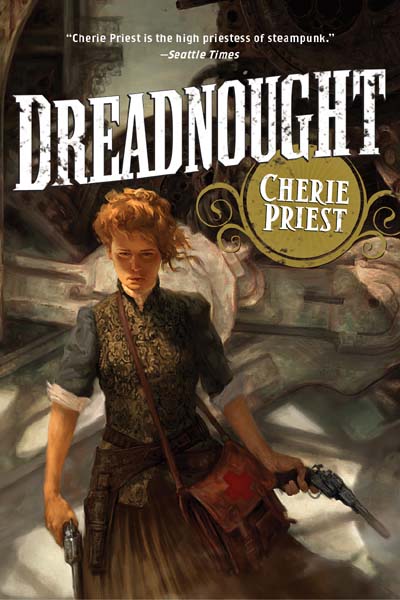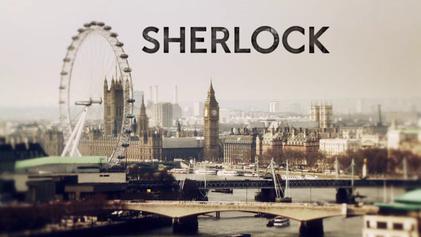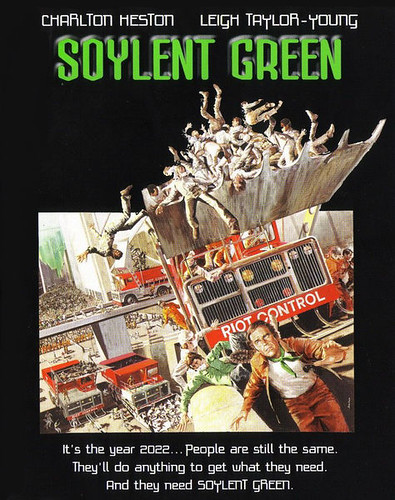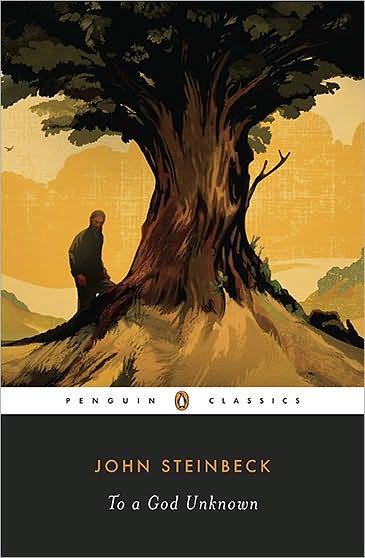
I've largely fallen out of the music blogging stuff that I once was heavily engaged in. Too much writing, not nearly enough reward, and it got to a point where it interfered with other projects that I've wanted to do, and the things that I write about when it comes to music are fewer and further between. I've not stopped listening to music, however, and there's been a number of really good albums released this year. Here's what I liked the most.
Kirby Krackle, E for Everyone
Kirby Krackle was a discovery that I made earlier this year via a musician friend of mine, John Anealio, and it's easy to bill these guys as some of the best all around Geek rockers out there. With their prior self-titled album, they've got an excellent backlog of songs that run the line from comic books (There's a lot here - Iron Man, Green Lantern, Wolverine, Great Lakes Avengers and more) to zombies (what self-respecting geek musician doesn't have a song about zombies?) to things like conventions and geek romance.
E for Everyone is an album that hits all the basic, rich chords, combined with lyrics that I find impossible not to sing along with loudly in the car. The set is a fun one, and I hope to hear more from them at some point in the near future.
Ray LaMontagne, God Willin' & The Creek Don't Rise
Ray LaMontagne is a long favorite of mine from college, and his latest album hasn't disappointed as he's changed up his style over the past couple of years. This latest outing is one that carries with it a particular country style with some of the songs, and looks to the virtues of a simpler, uncomplicated existence. The best song on the album is easily Beg Steal Or Borrow with its steady beat, perfect sound and breezy feel that makes me perk up a bit whenever I hear it on the radio.
LaMontagne has kept up with a good habit of not repeating his successes, nor does he change so drastically that his new music is something totally unexpected. God Willin' is an album that retains the best of his past, and changes as needed, and almost always for the better. While the album hasn't quite topped Gossip in the Grain, it's an excellent work by an excellent musician.
Goodtimes Goodtimes, Goodtimes Goodtimes
Franc, of Goodtimes Goodtimes, has been on a roll lately. He's just released a second music video from this album for 'Magic Hour' (Fortune Seller Song is the other, both excellent). Glue, the first album from Goodtimes Goodtimes, was a favorite of mine, but it absolutely pales in comparison to this self-titled album that's just been released. It's almost as if a filter has been removed and Franc's been unleashed. The music is polished, rich and textured, and the songs are superb. Each song on this album is excellent, strong and together, allow for a great album.
Grace Potter & The Nocturnals, Grace Potter And The Nocturnals
Grace Potter & The Nocturnals starts off with a bang with their reworked version of Paris (Ooh La La). It's a blast of energy that Grace has been known for on stage, and it's a good thing to see retained in their latest (and largest to date), self-titled album. The album's not their best: there's a certain flavor that seems to have been lost from their original work, but the band has retained their fantastic songwriting skills, new sounds and still a great energy and vibe that work with Grace's voice wonderfully.
Anais Mitchell feat. Justin Vernon, Ani DiFranco, Greg Brown, The Haden Triplets and Ben Knox Miller, Hadestown
I've described this album as a indie-folk retelling of the myth of Orpheus set in a post-apocalyptic fiefdom. Yep. It's also completely fantastic, an upgraded version of a production that Anais Mitchell worked on a couple of years ago. Hadestown is a rocking good time: it's akin to a stage soundtrack, with various (well known) singers taking on different characters. Justin Vernon (aka, Bon Iver) takes part, and we follow a great story of romance, betrayal, greed and revenge. Musically, this album is diverse, rich and fascinating, and every time I listen to the tracks, I'm intensely reminded of Cherie Priest's novel Boneshaker, with it's dark atmosphere, twisted characters and foreboding surroundings.
Jed Whedon and the Willing, History of Forgotten Things
Whedon is a name that all geeks should know. Not only the name of Joss (who did Firefly, Dollhouse and Buffy) or Zack (Screenwriter for Fringe, Deadwood, and Dr. Horrible), but Jed, for his work on not only Dr. Horrible, but for his fantastic History of Forgotten Things, which is easily one of my top favorites of the year. This well composed alternative-pop album is one that is both smooth and ethereal. There's a real SF/F feel to the album as well: Drones was used in the show Dollhouse (as well as Remains, a single that he's released), as well as Last Man and Ancestors. Is this music that we'll see more of in the future? I hope so.
Holy Fiction, Hours from It
Hours From It is a product of the west, and it feels like it. This was an unexpected album from Holy Fiction, and one that I completely fell in love with after a single listen. It's been on a regular rotation while I take long car rides, and it's perfect for blasting down the roads of Vermont. Each song has a fantastic beat and sound that's been based off of that, one that's not too overpowering. Songs like Exit demonstrate the real shifts capable from the musicians, and where Iron Eyes gives me a nostalgic feel for cross-country trips that I've taken in the past. The album's single downside is its length: it's far too short, and I'm chomping at the bit for more.
Carbon Leaf, How The West Was Vol. 1
One of my all-time favorite bands is Carbon Leaf, and as they've left the major record label Vanguard, they've begun to rework how they release music and tour around the country. I'm sad to have missed them this year, but I'm hopeful that I'll see them again in the state at some point in the future. How the West Was... Vol. 1 is the first of their new strategy to record and release music as an independent group. This short effort is a fun one with songs that I've wanted to hear on a record for a while, such as Native America. The album feels very much like a classic Carbon Leaf record, and it feels far more like an honest look at their songwriting, without the polish and production that's typically required of a major record. Their older stuff is great, and this is a great addition to it.
Hans Zimmer, Inception (Music from the Motion Picture)
This list isn't limited to bands. As such, Hans Zimmer's Inception soundtrack deserves some high praise. I loved the movie, and it's easily one of the best Science Fiction films that I've seen in a very long time, and that comes in no small part as a result of the soundtrack. The music compliments the film nicely, with a number of tracks, such as Half Remembered Dream, We Built Our Own World and Old Souls resonating with the emotional parts of the film, while Dream Is Collapsing, and Mombasa ratcheting up the tension where needed. The album's something I've listened to dozens of times, and it's a constant companion when I'm writing.
Ferraby Lionheart, The Jack Of Hearts
This album by Ferraby Lionheart is one that I'm somewhat split on. Some of the songs are ones that I'm not all that fond of. But the other half of the album is one that is just absolutely stunning: tracks such as Harry & Bess are ones that retain a nostalgic beat that feels like it wouldn't be out of place in the 1950s, and when the chorus kicks in, it's absolutely one of the best songs that I've ever listened to. There's other good ones here too: Arkansas and Sweet Tanzini retain a great Lionheart sound, and on the whole, it's a good, solid follow up to his first album.
Laura Veirs, July Flame
This album was one that I first heard about while driving home from Pennsylvania. Laura Veirs was an artist that I'd heard of, but hadn't listened to extensively - I'd actually seen her in person, opening for The Decemberists. I remember being unimpressed. July Flame, however, is a very good reintroduction to her, and I've found that this is a fantastic indie-rock album. Viers has a great voice and some great songwriting skills here, and July Flame is a quirky, fun listen.
Fictionist, Lasting Echo
Lasting Echo feels like something out of the 1970s, from the front cover of the album to the science fiction nature that some of the songs take on. This was a fun album to listen to, and moreover, it feels ... cool. Fictionist's songs are laid back, interesting and free: the song Human Wings exemplifies this, while Blue Eyed Universe is a neat little song that has taken to space with its music video. The sounds here are well balanced between the vocals and guitar work, which lends itself very well to my ears.
Mumford and Sons, Sigh No More
Recommendations from friends are the best sorts: my friend Laura pointed out Mumford and Sons to me, and it's clear that this album is going to land them on the map. With a short tour of sold out dates, the proof is in the pudding that they'll be growing a bit. Songs like The Cave, Roll Away Your Stone and White Blank Page bring in the energy that works well with their vocals. These guys sound like they're off to a great start. Can't wait to see how they turn out a couple albums from now. In the meantime, Sigh No More will have to do.
Josh Ritter, So Runs The World Away
Josh Ritter's latest album is a stunning piece of work, with some of my absolute favorite songs by him to date. The tone is set with Curtains, an instrumental, before launching into a set of songs that are rife with stories of mummies, killers, explorers and train rides. Ritter's songs are absolutely fantastic, with a rich blend of instrumental wonder and lyrical delights through out. My favorite songs off of this album are easily The Curse, about a mummy who returns to life, and a Southern Pacifica, for its smooth, train travelling song, Rattling Locks, with its harsh edges and Folk Bloodbath, the story of a, well, folk bloodbath. I'm desperately hoping that the band will be back in the area at some point soon - their live act is even better.
The Apples In Stereo, Travellers In Space And Time
For a bit of fun, listen to Travellers in Time and Space, an album that I came across while looking up songs for my geek music playlist. The Apples in Stereo have a slick synth-pop sound and feel that is bubbling with energy and enthusiasm. Songs like Dream About The Future, Strange Solar System and C.P.U. all feel very geeky with their titles and subject matter, and feel full of movement and bright sound that is both over the top and a bit like Electric Light Orchestra.
Cary Brothers, Under Control
Cary Brothers wrote one of my all time favorite albums: Who You Are, which I discovered in college. While Under Control doesn't quite live up to the same heights for me, it's still a very good album. Brothers has refined his sound during the break, and we're left with a lot of the great parts of his older work, along with an even better sound. Ghost Town, Break Off The Bough and Someday rank as my favorites off of this track, and there's a nice blend of fast/fun and softer/serious songs across the eleven tracks. I can't wait to see what he comes up with next.
This year felt like a good year for music, and at points, I feel like I've not listened to as much new music as I have in the past. Half of the albums that I listened to this year were from bands that I've liked enough to listen to again, while another half were new discoveries, recommendations and stumbled upon records that I'd never heard of before. I'm happy with that, and if you're looking for something to listen to that's reasonably new, these albums are all ones that I highly recommend.
 Six years ago, a NASA space probe returned to Earth, carrying with it alien life. When it crash landed in northern Mexico, and alien life forms spread throughout the country, prompting United States and Mexican authorities to quarantine the region to contain their spread. When a photographer is asked to bring his employer's daughter back to the United States, they have to travel through the infected zone to reach safety. The film is a stunning, beautiful, and understated movie that surprised me all the way through to the credits.
Six years ago, a NASA space probe returned to Earth, carrying with it alien life. When it crash landed in northern Mexico, and alien life forms spread throughout the country, prompting United States and Mexican authorities to quarantine the region to contain their spread. When a photographer is asked to bring his employer's daughter back to the United States, they have to travel through the infected zone to reach safety. The film is a stunning, beautiful, and understated movie that surprised me all the way through to the credits.
 Last year, I picked up Ian McDonald's fantastic science fiction novel River of Gods and loved his take on an India of the future. With his latest book, The Dervish House, McDonald relocates to Turkey of 2027. Rarely do I come across a book that absolutely floors me, and where River of Gods really impressed me, The Dervish House completely bowled me over with its interconnecting storylines, fantastic prose and wonderful characters.
Last year, I picked up Ian McDonald's fantastic science fiction novel River of Gods and loved his take on an India of the future. With his latest book, The Dervish House, McDonald relocates to Turkey of 2027. Rarely do I come across a book that absolutely floors me, and where River of Gods really impressed me, The Dervish House completely bowled me over with its interconnecting storylines, fantastic prose and wonderful characters.
 John Joseph Adams has distinguished himself in the past with outstanding speculative fiction anthologies, from Wastelands to The Living Dead and others. His latest volume, Brave New Worlds, is perhaps one of the finest sets of short fiction that I've ever read, with a stunning table of contents and authors to tell their stories of oppression.
John Joseph Adams has distinguished himself in the past with outstanding speculative fiction anthologies, from Wastelands to The Living Dead and others. His latest volume, Brave New Worlds, is perhaps one of the finest sets of short fiction that I've ever read, with a stunning table of contents and authors to tell their stories of oppression.
 It’s hard to mention the term Steampunk without also mentioning Cherie Priest’s Clockwork Century series, an alternate history of the United States, featuring all of the bells and whistles that comes with the territory. The first novel, Boneshaker, was well received, as was the short novella, Clementine, set shortly after the events of the first book, while the latest entry in the series (there are two more planned), Dreadnought, picks up the story across the country and helps to flesh out Priest’s strange alternate world. An interesting follow-up to Boneshaker, Dreadnought never quite reaches the same heights that its predecessor reached, nor does it quite feel as unique. As such, Priest brings out new elements to the Civil War only hinted at in the previous books, and tells a fun story, one that is sure to be popular with the steampunk crowd.
It’s hard to mention the term Steampunk without also mentioning Cherie Priest’s Clockwork Century series, an alternate history of the United States, featuring all of the bells and whistles that comes with the territory. The first novel, Boneshaker, was well received, as was the short novella, Clementine, set shortly after the events of the first book, while the latest entry in the series (there are two more planned), Dreadnought, picks up the story across the country and helps to flesh out Priest’s strange alternate world. An interesting follow-up to Boneshaker, Dreadnought never quite reaches the same heights that its predecessor reached, nor does it quite feel as unique. As such, Priest brings out new elements to the Civil War only hinted at in the previous books, and tells a fun story, one that is sure to be popular with the steampunk crowd.














